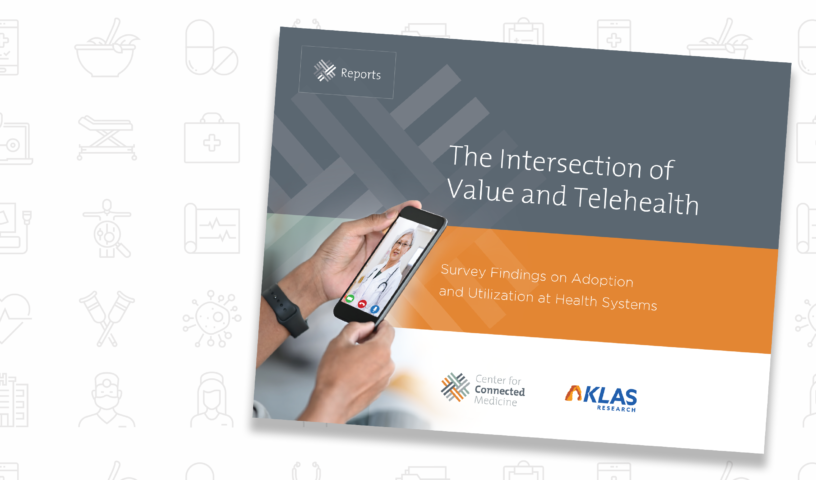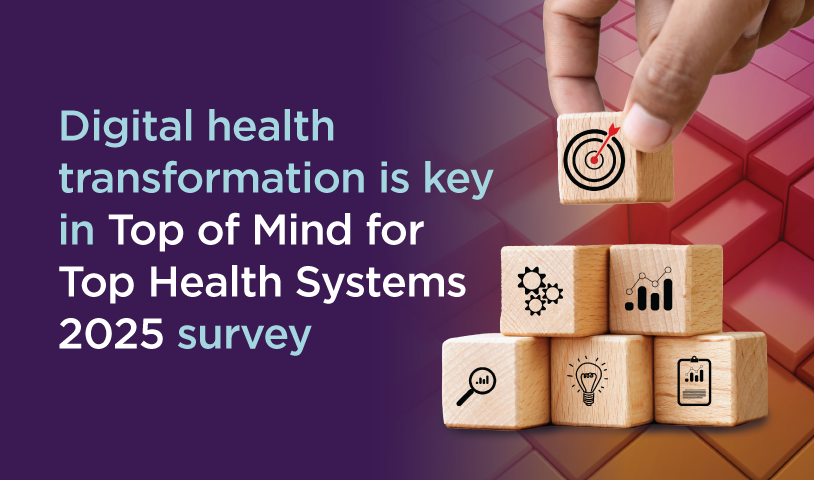
Sep 7, 2021
Telehealth utilization settles in at 20% or less of medical appointments
New research from the Center for Connected Medicine also finds that health systems want to expand telehealth to chronic care management, behavioral health, and urgent care
More than a year after many hospitals ended their COVID-19 shutdown of non-emergency care, the use of telehealth for patient visits is leveling off at 20% or less of all appointments, according to new research from the Center for Connected Medicine.
More than 80% of survey respondents said one-fifth or less of their organizations’ appointments were being conducted virtually, according to the CCM’s research. And of the small number of hospitals and health systems reporting 30% or more of patient volume as virtual, many said they expected that number to decline as the pandemic wanes.
Conducted in partnership with KLAS Research in May and June 2021, prior to the uptick in COVID-19 cases due to the Delta variant, the report is based on a survey of nearly 100 executives, directors and managers in technology, informatics, business, and clinical roles at U.S. health systems and hospitals.
Health systems planning expansion of telehealth
Despite lower post-pandemic telemedicine volumes at many health systems, the CCM found that provider organizations are looking to expand telehealth services to better manage the health of patient populations while keeping costs down. Chronic care management, behavioral health and urgent care were the top three service lines cited by survey respondents for future expansion of telehealth.
Those are among key findings in the CCM report, “The Intersection of Value and Telehealth: Survey Findings on Adoption and Utilization.”
“Telemedicine is an important technology for advancing care and improving value at health systems. While utilization has declined compared with pandemic highs of 2020, we continue to invest in our telehealth capabilities because it is the right thing to do for our communities,” said Rob Bart, MD, Chief Medical Information Officer of UPMC, one of the nation’s largest integrated health systems and a founding partner of the CCM.
[New eBook captures key takeaways and highlights from private roundtable on the future of telehealth]
“Telemedicine is an important technology for advancing care and improving value at health systems. While utilization has declined compared with pandemic highs of 2020, we continue to invest in our telehealth capabilities because it is the right thing to do for our communities,”
Telehealth’s role in boosting value in health care
In addition to asking about current and future use of telehealth services, the report examines the role of virtual care in providing greater value in health care. In research last fall by KLAS and the CCM, 77% of respondents said their organizations were measuring and analyzing use of telehealth by patients — a key first step in understanding the technology’s value. In the latest survey, 92% reported measuring and analyzing at least one metric.
About a quarter of respondents reported measuring health outcomes for patients using telehealth in the latest survey, up from 12% who said they were doing so in the 2020 report.
Even with loosened regulations and higher reimbursement for telehealth services, health systems and hospitals still identified obstacles to advancing the use of virtual care. Patients’ access to technology and broadband and uncertainty around reimbursement were cited as the top challenges.


